Arizona’s climate is incredibly varied, ranging from the hot and dry deserts in the south to the cooler climates of the higher terrain of the Colorado Plateau in northeast Arizona. There are also mountain ranges that run from northwest to southeast, resulting in heavier precipitation and greater temperature variations.
On average, temperatures range from around 40°F at the highest mountain elevations to mid-70s °F lower elevation areas of southern Arizona. It is not unusual for summer temperatures to reach between 105°F and 115°F in these regions.
Coldest January Day in Arizona
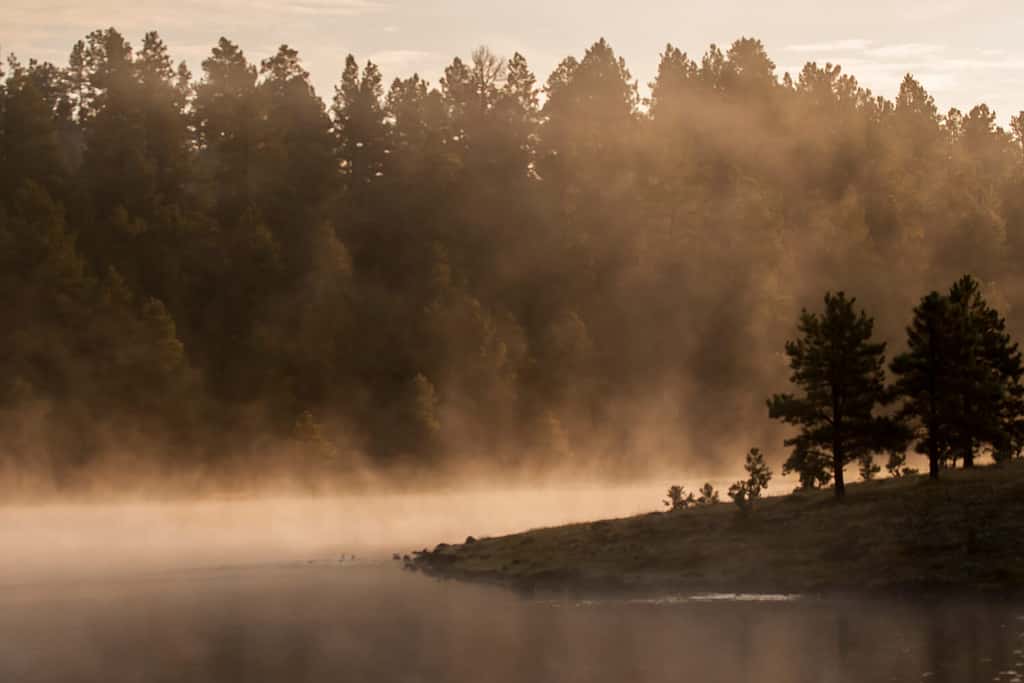
Nestled on the historical White Mountain Apache Tribal Land, Hawley Lake is the rainiest and wettest place in Arizona.
©AZ Outdoor Photography/Shutterstock.com
The coldest January day in Arizona was recorded on January 7, 1971, near Hawley Lake. On that day, temperatures dropped to -40°F! This is the all-time low the state of Arizona has ever recorded.
The lake is located 30 miles from the town of Pinetop, which is situated in the White Mountains of eastern Arizona. Surrounding the lake are pine-studded ridges that form a bowl, remnants of an extinct volcano, and a place where cold air accumulates easily.
A wooden shelter holds a thermometer from the National Weather Service that was able to record the low temperatures. This area sits at 8,200 feet above sea level and often receives quite heavy snowfall – sometimes up to 90 inches!
Animals of Arizona

Reptiles such as lizards and snakes are common throughout all regions of Arizona, and you may even spot a Gila monster or desert
tortoise
in its natural habitat!
©No machine-readable author provided. Dominic assumed (based on copyright claims) / public domain – License
Arizona is home to many species of birds, including the bald eagle, roadrunner, and cactus wren. In addition to these more common animals, some rarer wildlife, like the black-footed ferret, can be found in the grasslands of Arizona’s western deserts.
Reptiles such as lizards and snakes are common throughout all regions of Arizona, and you may even spot a Gila monster or desert tortoise in its natural habitat! Amphibians, like frogs and salamanders, can be found near streams or ponds.
Whatever your animal preferences, you will likely find something interesting if you take the time to explore Arizona’s diverse ecosystems!
How Do Animals Survive in the Desert?
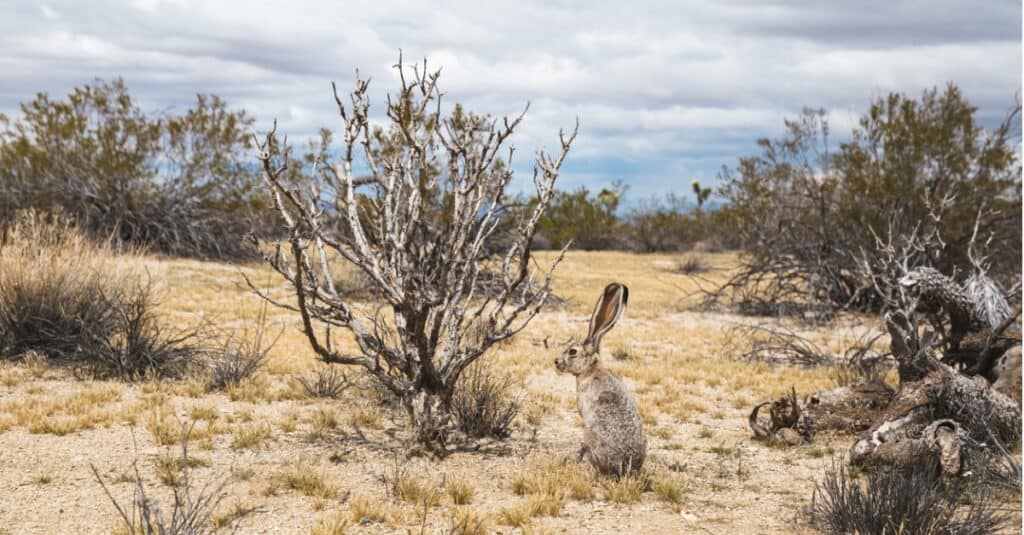
Jackrabbits have ears that can disperse heat quickly.
©iStock.com/Attila Adam
Animals in the desert have many adaptations that help them survive. These include having thick fur or feathers to keep them insulated and warm, as well as large ears that can disperse heat quickly. Many animals also burrow deep underground during the day when temperatures soar, reducing their exposure to the sun’s rays. They also generally come out at night when it is cooler. During cold winters, they can come out and enjoy the sun to stay warm.
Other animals, such as snakes and lizards, have adapted by becoming nocturnal to avoid being active in direct sunlight during peak hours of heat. Additionally, some species of birds migrate south for winter. Traveling further south allows them to escape harsh climates and find food. All these adaptations make it possible for life to thrive in even the most extreme hot or cold desert temperatures!
Nocturnal Living
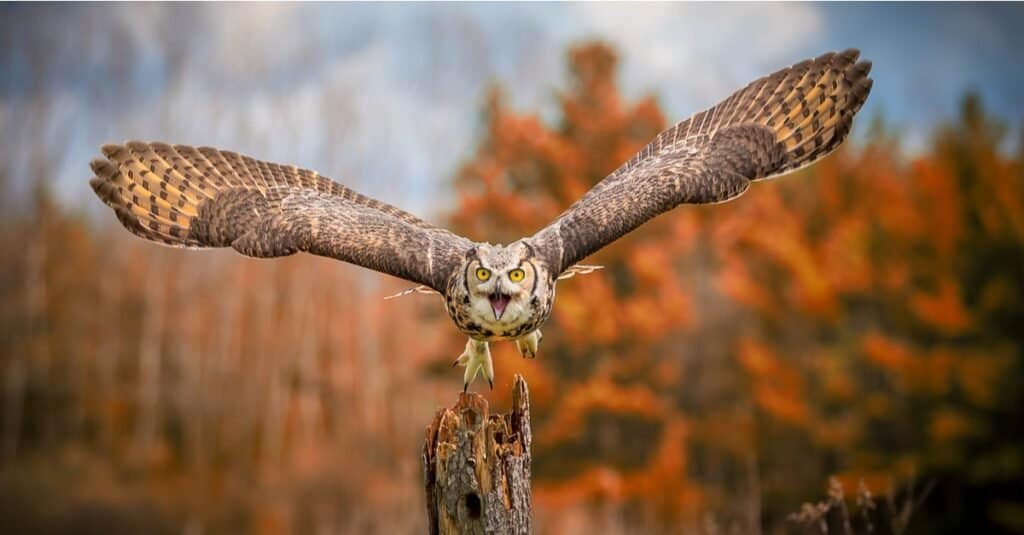
Great-horned owls scan the area in pursuit of mice and other rodents. They are mostly nocturnal hunters.
©Imran Ashraf/Shutterstock.com
At night, the desert is filled with life. Nocturnal animals are busy foraging for food and hunting for prey. Kangaroo rats search for seeds to fuel their energetic lifestyle. At the same time, great-horned owls scan the area in pursuit of mice and other rodents.
Banded geckos hunt insects, while kit foxes scavenge around in search of an easy meal.
During the day, however, these animals take refuge from the heat by hiding in cool underground burrows or rock crevices that provide shelter from the scorching sun’s rays. Cactus holes also make a great hideaway as they are often naturally insulated to keep them cool during hot days and warm at night!
Physical Adaptations
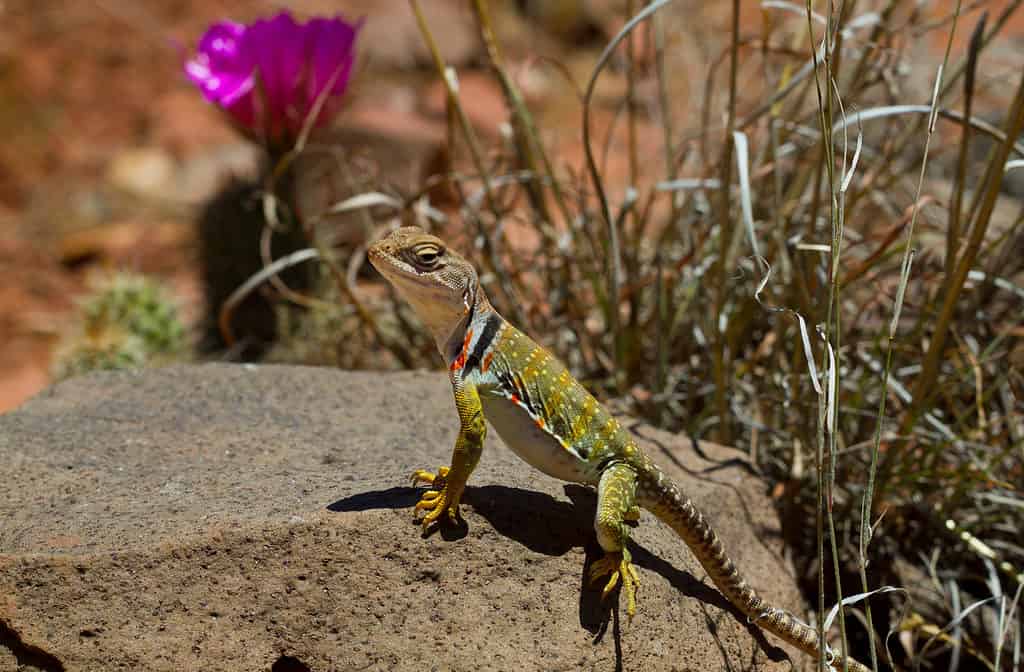
Many lizards have long legs to keep their bodies from touching the hot sand.
©Patricia Bouweraerts/Shutterstock.com
Some desert animals store their fat in humps or tails instead of throughout their entire bodies because fat intensifies heat and can make temperatures more uncomfortable than necessary.
The long ears of jackrabbits are another adaptation for dealing with high temperatures. These thin ears contain numerous blood vessels, allowing extra body heat to pass through them into the surrounding air, which helps bring down their temperature.
Beetles and lizards make use of their long legs to stay off the hot desert surface. This adaptation helps them reduce their exposure to heat from the ground and disperse any heat they do absorb across a larger area.
Other creatures have developed pale-colored fur or feathers, which help reflect sunlight away from their body, keeping them cooler than if they were darker in color.
Behavior Adaptations
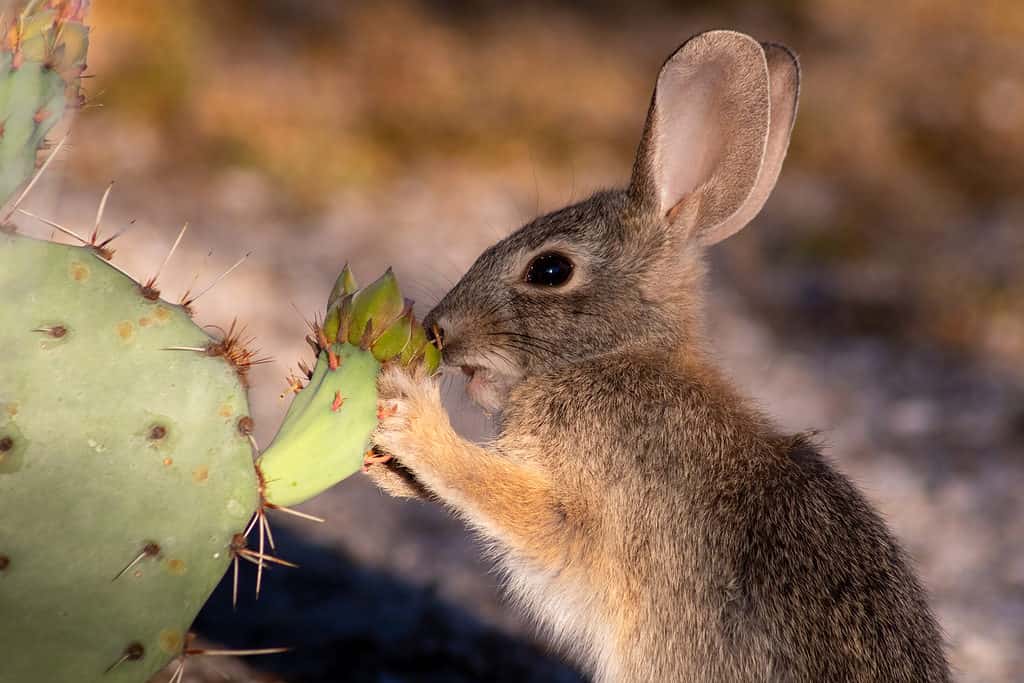
Many animals stay hydrated by eating cactus.
©Charles T. Peden/Shutterstock.com
Animals living in the desert have had to evolve and develop unique adaptations to survive in such a harsh environment. Have you ever seen a lizard stand with its body raised high above the soil? This behavior helps keep them cool as soil temperatures can be 40°F warmer than the surrounding air.
To conserve water, some animals get all the moisture they need from their food. Pack rats eat cacti and other “juicy” plants that contain plenty of water content. In contrast, kangaroo rats rely on their unique digestive systems to extract enough water from seeds for survival. These behaviors are essential for these animals to survive a dry season.
Types of Animals

Sonoran Desert Tortoise at Catalina State Park in Arizona.
©Sean R. Stubben/Shutterstock.com
Arizona is home to a huge variety of animals that inhabit everything from the low Sonoran Desert to the high alpine mountains. From small mammals such as squirrels and rabbits to large predators like mountain lions and bears, many species call Arizona their home.
Reptiles also abound in this area, with lizards, snakes, and tortoises being common sights. In addition to these land animals, birds of every shape and size can be seen flying through the sky or perched on tree branches. With its diverse habitats providing homes for so many creatures, Arizona has earned itself a reputation as one of North America’s most biodiverse regions! Here are a few of our favorite Arizona animals.
Javelina
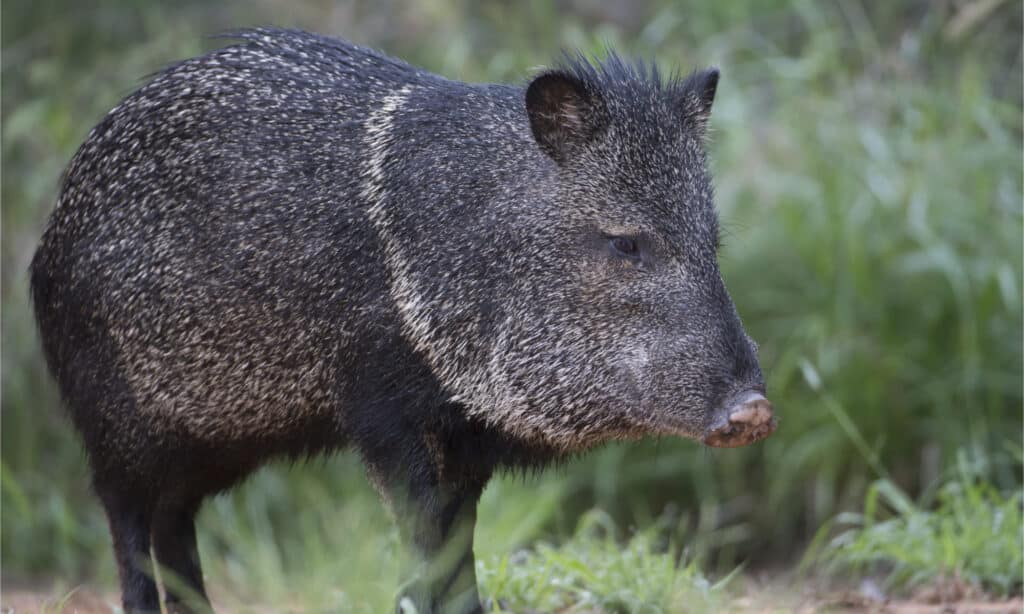
Javelina are unique animals that live in Arizona
©Dennis W Donohue/Shutterstock.com
The javelina is one of the more unique Arizona wildlife species. These grunting pig-like animals often form herds, with a clear social hierarchy established among them. Javelina communicates both verbally and through body language, producing various squeals and squeaks to indicate their moods or intentions. Watching these fascinating creatures interact is always an entertaining experience!
Coyote
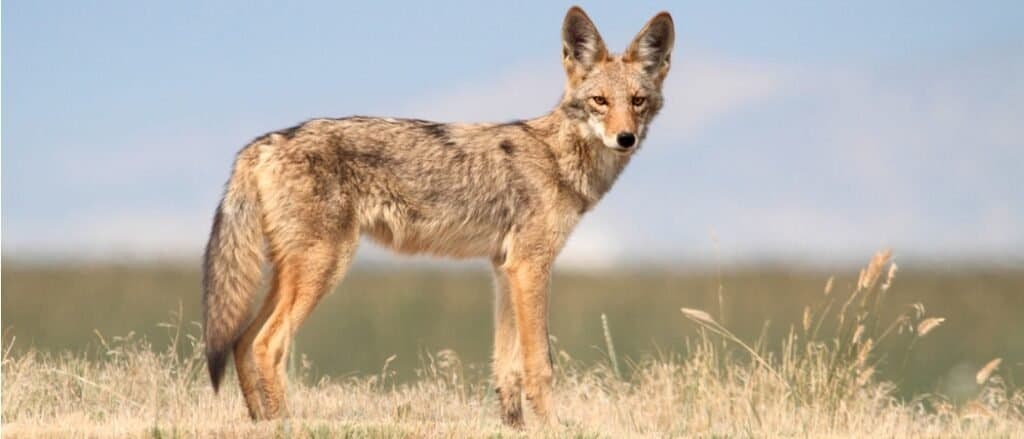
Coyotes are a crucial part of the Arizona ecosystem.
©iStock.com/SteveByland
Coyotes are an important part of Arizona’s ecosystem. They keep rodent populations in check, helping to maintain balance in the environment. Coyotes have also been known to hunt larger prey species but prefer smaller mammals such as rabbits and mice, reptiles, and birds. The color of coyote fur varies depending on where they live – shades of tan, brown, gray, and red coats have all been spotted throughout Arizona. Coyotes are generally nocturnal animals, so spotting them during the day can be difficult. Occasionally, you may catch a glimpse of them when they’re hunting for food!
Deer

Coues whitetail deer,
Odocoileus virginianus couesi, a young male buck with velvet antlers in the Sonoran Desert foraging for food in the morning.
©Charles T. Peden/Shutterstock.com
The Coues whitetail deer are generally found in the higher elevations of Arizona. In contrast, mule deer are spread across a variety of habitats. You can spot both species in larger groups as they feed or travel to their nesting grounds during the spring and summer.
The colder winter months bring an interesting change for deer. From December to January, the bucks begin their breeding season, known as “the rut,” when mating takes place. Winter is an excellent period for visitors who want to witness a wide range of behaviors, such as sparring between bucks and antler-shedding. To increase your chances of seeing these majestic creatures, we recommend getting out on the trails at sunrise or sunset – this is when they are most active.
Raccoon
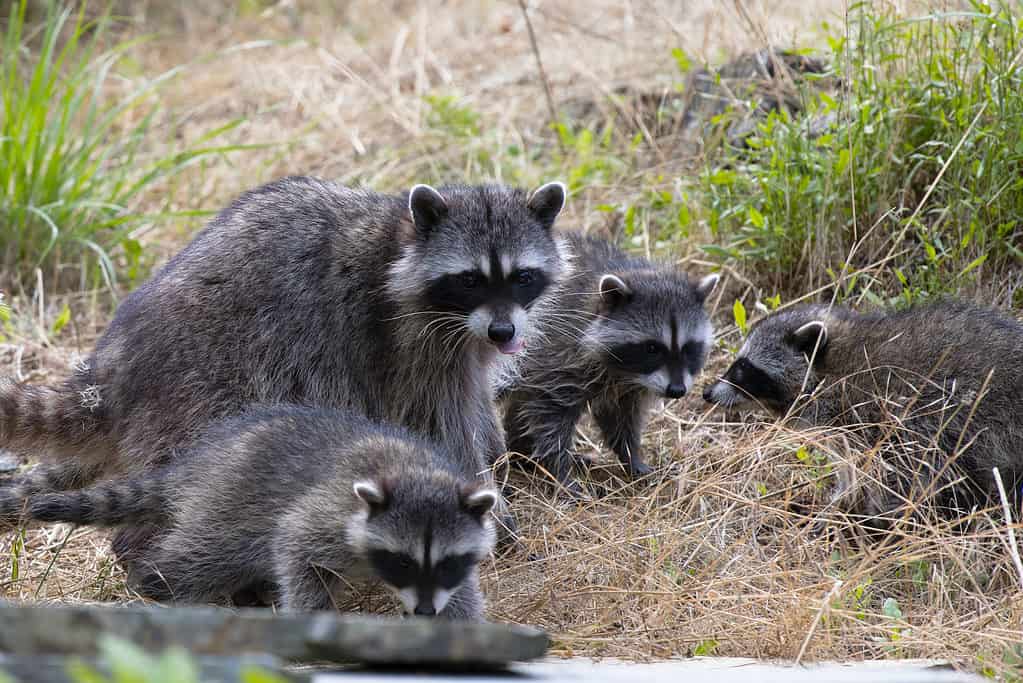
In Arizona, raccoons can be found throughout the state in areas with water sources like rivers, lakes, or creeks.
©iStock.com/Wirestock
Raccoons are well known for their intelligence, often being able to solve problems complex problems. They can also be very mischievous and resourceful when getting food. Raccoons have been observed using tools such as rocks and sticks to reach food sources they otherwise couldn’t.
In Arizona specifically, raccoons can be found throughout the state in areas with water sources like rivers, lakes, or creeks. These smart little mammals typically weigh around 30 pounds and thrive near humans due to our activities, making it easier for them to find food sources.
It’s not uncommon to wake up after camping out only to discover trash strewn about the campsite – a sure sign that some hungry raccoons have visited you! Mostly omnivorous creatures, these guys consume an array of plant-based foods like fruits, grains, and nuts, as well as animal species such as insects, fish, eggs, and small rodents. Although they are nocturnal by nature, if you’re lucky enough, you may catch sight of one during daylight hours if you know where to look!
Red-Spotted Toad

Red-spotted toads are one of the most adaptable amphibians in Arizona. They can be found in various habitats ranging from grasslands to oak woodlands.
©iStock.com/Timothy Cota
Red-spotted toads are one of the most adaptable amphibians in Arizona. They live in various habitats ranging from grasslands to oak woodlands. Adults grow up to three inches long, have distinctive red spots along their backs and sides, and produce a high-pitched trill.
They feed primarily on insects but also sometimes eat other small amphibians. Red-spotted toads prefer rocky areas near permanent streams, ponds, lakes, or other bodies of water where they can hide amongst rocks during the day while they hunt for food at night. They are particularly active after rainfall when their insect prey is most abundant.
Gila Monster
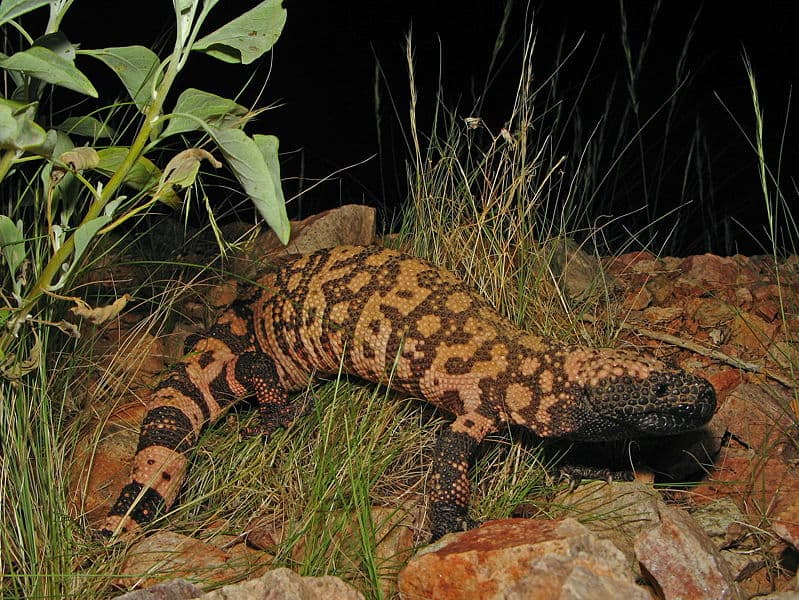
Often out at night when it’s cooler are Gila monsters.
©Jeff Servoss, Public domain, via Wikimedia Commons – License
Gila monsters are known for their adaptation to the desert environment. They have a specialized diet that consists of small mammals, birds, and other reptiles. Gila monsters store fat in their tails, allowing them to hibernate during cold seasons.
Additionally, they possess venomous saliva, which helps them immobilize prey before consuming it. It also helps with self-defense against predators such as coyotes or owls. Fortunately for humans, their venom is not dangerous unless ingested orally or injected directly into our bloodstream.
You may be lucky enough to spot one of these mysterious creatures sunning themselves amongst rocks or beneath a bush when out on a hike. If so, keep your distance and snap some photos from afar to avoid disturbing its natural habitat any further than necessary!
Western Diamondback Rattlesnake

Arizona’s most recognizable and feared reptile is the western diamondback rattlesnake.
©Alexander Wong/Shutterstock.com
The western diamondback rattlesnake is Arizona’s most recognizable and feared reptile. Most of them live in deserts and rocky areas, where they often bask in the sun to regulate their body temperature. They like to remain undisturbed, so if we get too close, many will give a warning rattle to alert us before striking.
In addition to rodents, these vipers eat lizards, birds, and sometimes even smaller snakes. They are an important part of the food chain as they are preyed upon by various species, such as coyotes, bobcats, roadrunners, kingsnakes, and birds of prey. It’s essential that we respect their need for privacy when we come across them outdoors – watch from a safe distance but don’t disturb them!
Greater Roadrunner
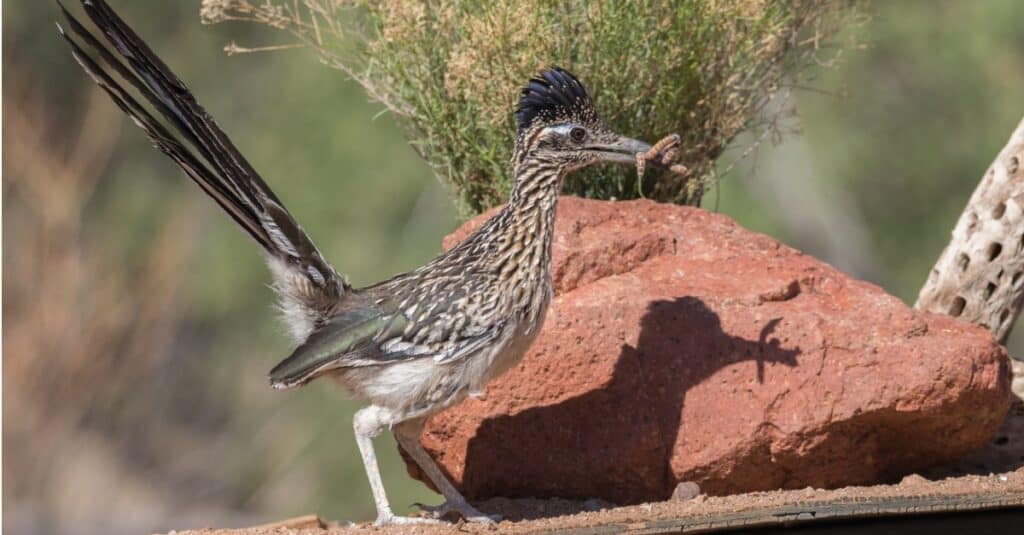
Roadrunners prey on small rodents, lizards, and insects. They have also become especially adept at killing and eating
rattlesnakes
due to their powerful beaks.
©iStock.com/Dee Carpenter Photography
The roadrunner, or greater roadrunner (Geococcyx californianus) as they are known scientifically, can be seen all across Arizona. These birds are members of the cuckoo family and stand out by being the largest bird in that group. Roadrunners have a unique body shape with long legs and tail feathers which helps them to run quickly over open ground.
Roadrunners prey on small rodents, lizards, and insects. They have also become especially adept at killing and eating rattlesnakes due to their powerful beaks, which can deliver a fatal bite.
Roadrunners typically mate for life, and both males and females will work together to defend their territory from predators such as coyotes or hawks. The pair will also construct several nest sites where they can lay eggs safely before incubation begins. As fun-loving birds who enjoy playing along trail sides in Arizonan parks, it’s no surprise these cheeky little animals continue to captivate observers everywhere!
The photo featured at the top of this post is © Susan E. Viera/Shutterstock.com
Sources
- Arizona-Sonora Desert Museum, Available here: https://www.desertmuseum.org/center/edu/docs/6-8_TIP_background.pdf
- Arizona State Parks & Trails, Available here: https://azstateparks.com/arizona-wildlife
- AZ Central, Available here: https://www.azcentral.com/story/news/local/arizona/2015/06/24/coldest-place-temperature-arizona-extreme-weather/29166139/
- National Weather Service, Available here: https://www.weather.gov/fgz/Cold
- Office of the Governor - Arizona, Available here: https://azgovernor.gov/governor/arizona-wildlife#:~:text=Desert%20animals%20and%20reptiles%20include,and%20oak%20and%20pinion%20pine.
- State Climate Summaries, Available here: https://statesummaries.ncics.org/chapter/az/
Thank you for reading! Have some feedback for us? Contact the AZ Animals editorial team.






